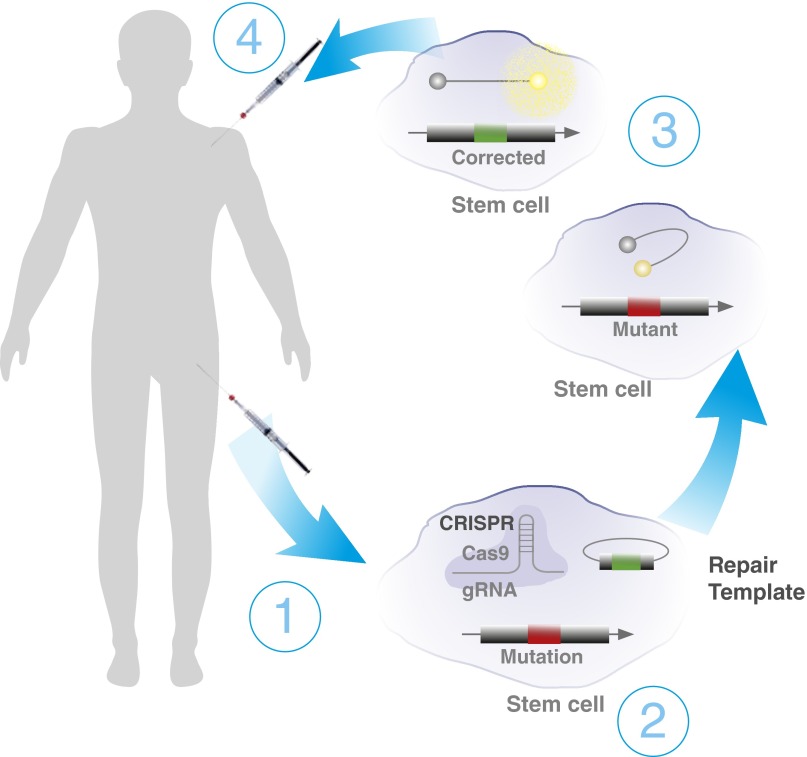Figure 3.
Schematic of the use of gene-editing techniques to repair a known gene mutation as a therapeutic approach, in this case demonstrating the manipulation of a patient’s own stem cells. (1) CRISPR–Cas9 can be used with homologous recombination to repair a bone morphogenetic protein receptor type 2 (BMPR2) mutation for autologous transplant in patient bone marrow. (2) Bone marrow is extracted from the patient and sorted for stem cells. Stem cells are transfected with CRISPR–Cas9 guided to the mutation site, with homologous recombination DNA containing corrected sequences. (3) Small-molecule nonhomologous end-joining blockers can be used to increase the efficiency of homologous recombination. (4) Molecular probes that fluoresce only when bound to the corrected RNA can be used to sort for cells that have had their mutations corrected. Corrected stem cells are reintroduced into the patient. This process is still a hypothetical approach to correct stem cells with a BMPR2 mutation that may promote pulmonary arterial hypertension; there are a number of technical barriers that must be overcome as described in text. Cas9 = CRISPR-associated protein 9; CRISPR = clustered regularly interspaced short palindromic repeats; gRNA = guide RNA.

